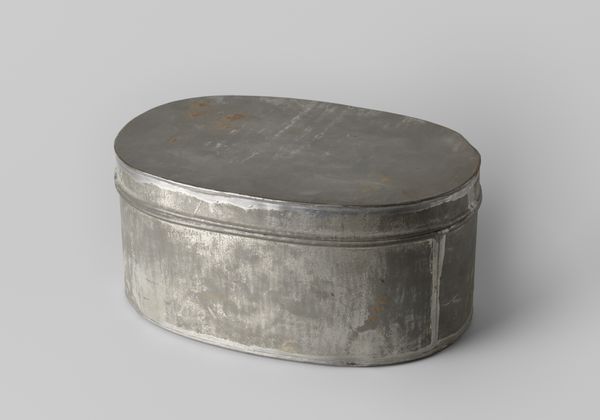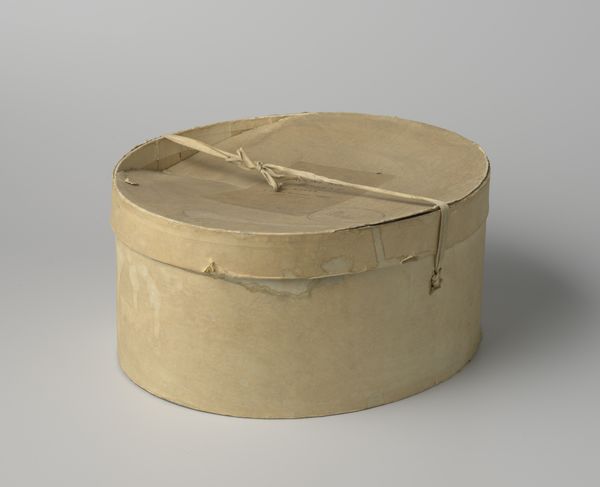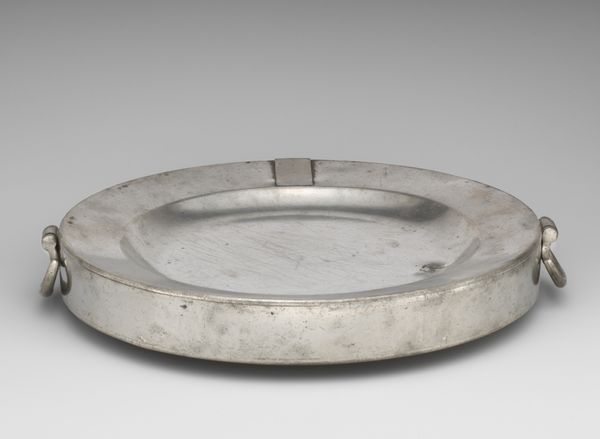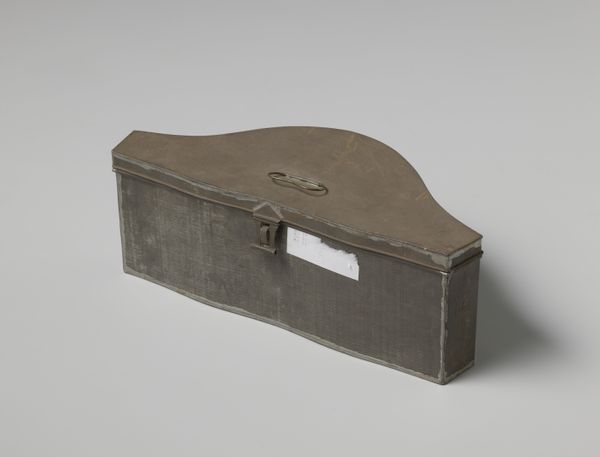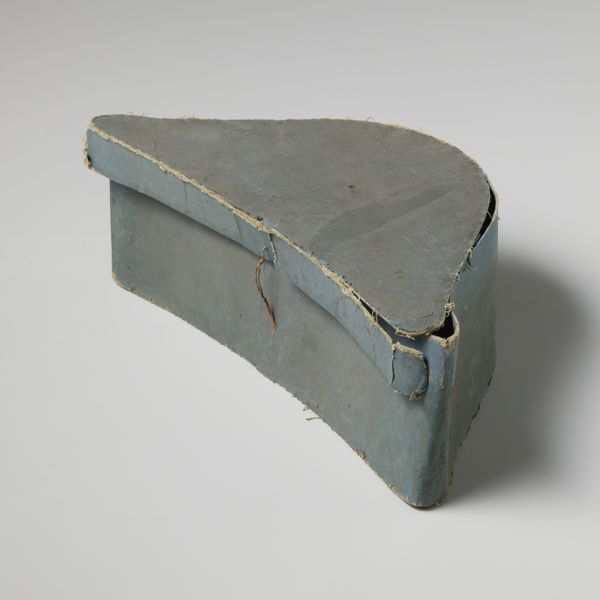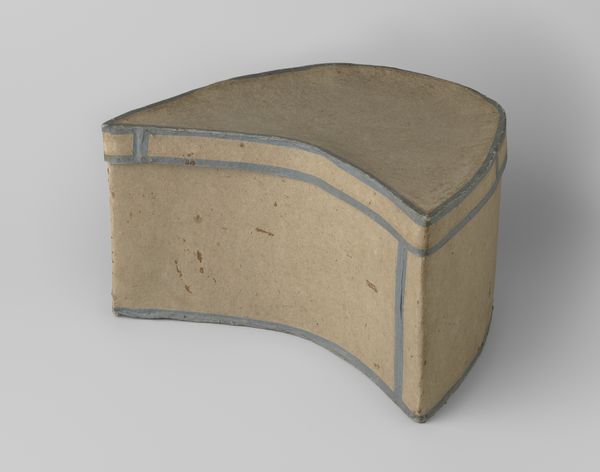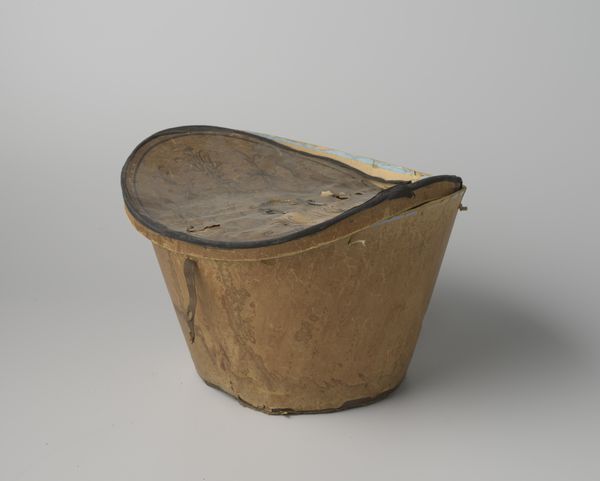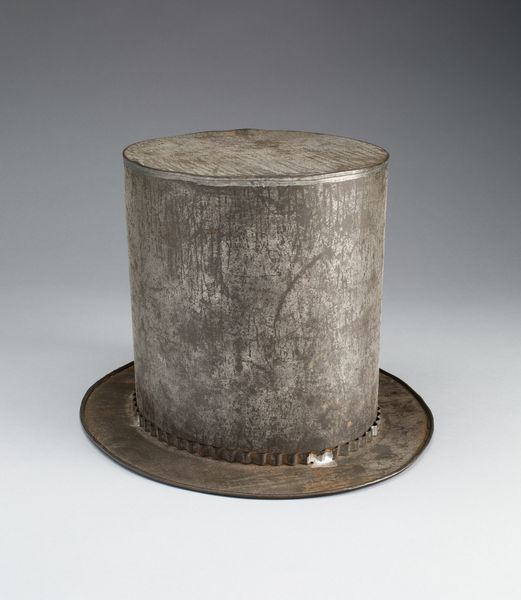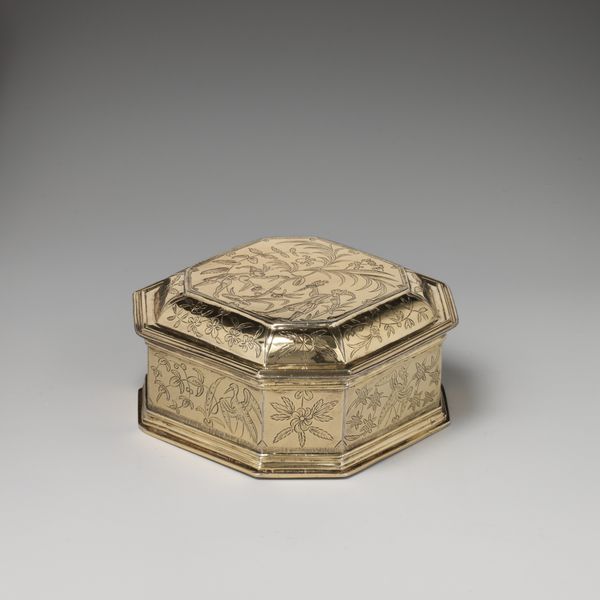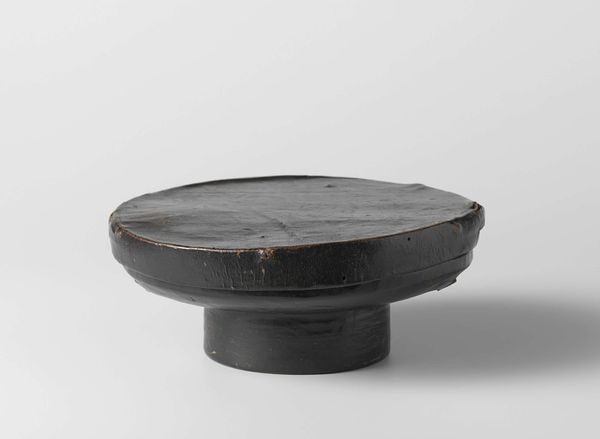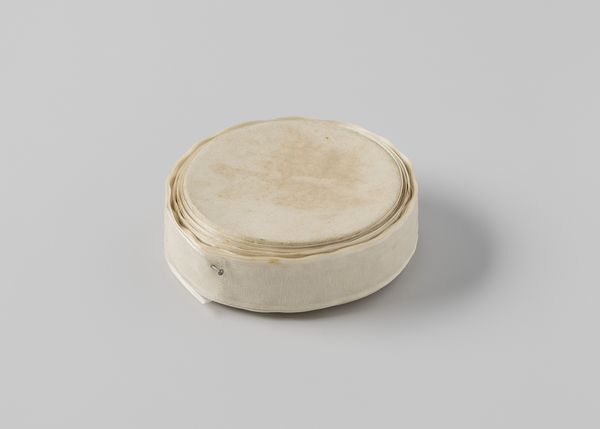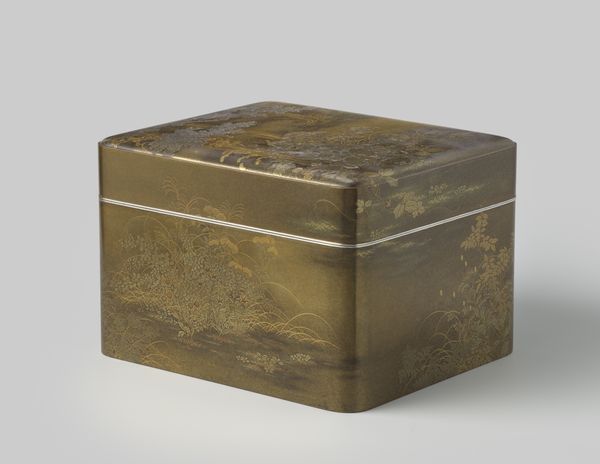
Dimensions: height 12 cm, width 36 cm, depth 17 cm
Copyright: Rijks Museum: Open Domain
Curator: This is an oval tin box with a separate lid, crafted sometime between 1800 and 1850, unsigned. A. de Block is noted on the record. What are your initial impressions? Editor: Austere. Practical. The bare metal, the simplicity of the form...it speaks of function over all else. It has the look of being both aged and timeless. I wonder what it held. Curator: Considering the period, such tins served all manner of purposes. From storing precious spices like tea and coffee, to keeping dry goods safe from pests and moisture. These humble containers often reflected trade networks and economic realities of the time. Editor: Exactly! What stories could it tell, if this box could speak? How did access to tea, or coffee, or flour shape colonial societies and contribute to socioeconomic hierarchies? We are prompted to think not only about who might have used this tin, but how it fits within that global history of food access. Curator: It is a reminder of the material culture of daily life, that so often escapes our attention in grand narratives. Tin-smithing itself has a long, interesting history of trade and workshop structure. Editor: Right, and think of the labor involved—the extraction of the metal, its processing, the crafting of this object... all linked to larger societal systems of class and labour. I see that despite being decorative art it looks like a tool, rather than art. Curator: Yes, its very form emphasizes its role within the home economy. Its decorative elements are minimal. Yet, that oval shape, those carefully folded edges...it is not without a certain austere beauty. I wonder what the composition of that metal is... and from what lands those materials were extracted. Editor: And considering the age, what were the labour conditions under which it was manufactured, who would have owned such an item, and in which spaces would you have found the storage tin on display. It all adds to a bigger and a bigger social framework in my mind! Curator: I agree entirely! Such humble objects offer incredible insights into a much larger historical fabric. They deserve this focused attention to expand understandings of society during the time period, as well as global industry at the time! Editor: Absolutely. Let’s hold that thought as we consider the many objects on display that weave a rich cultural and political fabric.
Comments
No comments
Be the first to comment and join the conversation on the ultimate creative platform.
